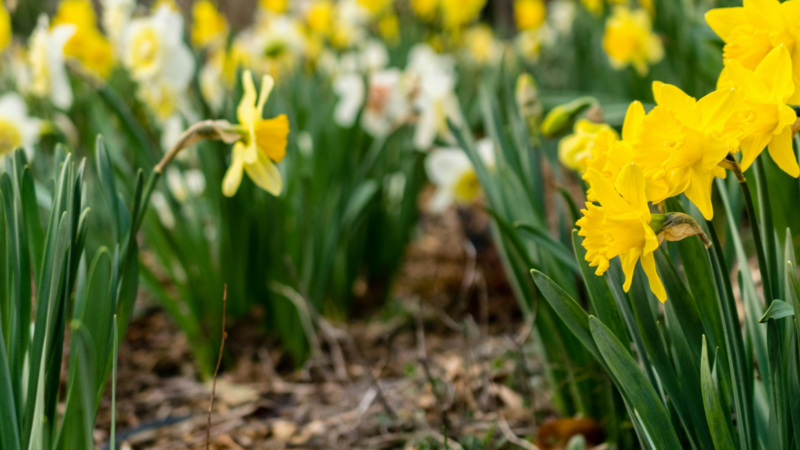Toxic flowers to dogs you should avoid using as decoration

Spring is here, and many households will add daffodils and tulips to their tables as decorations. But, with many households also owning a dog, it can be difficult to know which flowers are safe, and which are toxic to your dog.
To help Brits keep their dogs safe and avoid hefty veterinary bills, dog-friendly holiday letting specialist Canine Cottages has worked with dog trainer, Joe Nutkins, to reveal five spring flowers that are poisonous to your pooch – as well as what to do if your dog accidentally ingests one of these flowers. This way, you can make the right choices when buying decorative flowers, and keep your pooch safe!
The spring flowers that are poisonous to your dog
1. Snowdrops: These small flowers are already blooming across the UK, but they can cause quite a bit of damage to your pooch if ingested. It’s the bulb of this plant that is the real danger, so if you have a dog that loves digging, it would be smart to remove these plants from your garden. While the bulb is the most dangerous, the rest of the plant can cause your dog to become very poorly too, with symptoms including vomiting and diarrhoea.
2. Tulips: These beautiful flowers are often found in many homes but are proven to be extremely poisonous to pets. It’s not wise to let your dog near this plant, especially the bulb, which is the most poisonous part. Symptoms of an ingested tulip include vomiting, drooling and diarrhoea. Even drinking the flowerpot water can prove poisonous to dogs.
3. Daffodils: Similar to tulips, daffodils are also dangerous, with vomiting, salivating and cardiac arrhythmia among the worst symptoms. If you have a dog, it is advised to keep these plants in a secure location where the dog cannot reach them.
4. Bluebells: The common bluebell can be found across Britain’s woodland and is also among the plants that are poisonous to dogs. This plant grows close to the ground and is easy for dogs to bite. Symptoms of ingesting this plant are very similar to previous plants, so make sure to note the flowers you see in the area in case you need to recount what your pet has eaten to your vet.
5. Crocuses: This flower is a true sign spring is here but is also very toxic for your dog. In the worst cases, this flower can cause organ failure if ingested, as well as lesser symptoms such as vomiting, bloody diarrhoea and salivating. If you spot your dog eating one of these flowers, call your vet immediately.
What to do if your dog eats a poisonous plant
If your dog decides to nibble on any dangerous plants, dog trainer, Joe Nutkins explains what to do: “Typically, dogs would avoid eating a plant that they instinctively know is poisonous to them, more so when most of the plant, or all of it, will be dangerous. If your dog does manage to eat a plant or flower that is known to be toxic to dogs, call your vets while getting ready to take your dog directly to them. Calling your vet while you are on your way, or asking someone else to call them for you, means they can get everything ready for your arrival and help your dog sooner. If you aren’t’ near your own vet, look up a local vet if you haven’t already located one in advance and let them know you’re on your way.
“If your dog eats a plant you suspect is poisonous or toxic, you can contact the Veterinary Poisons Information Service on 01202 509 000. Have the info to hand that includes what plant your dog has eaten or a description of what it looks like – including the colour and any leaves, flowers or berries – as well as the size of your dog, and how much has been eaten. The hotline isn’t free, but it will give you advice on whether your dog needs to see the vet urgently or not.”
Commenting on the guidance, Sarah Pring, Digital PR Manager at Canine Cottages, notes: “It’s important to be aware of the flowers and bulbs which could prove to be poisonous or toxic to dogs. Therefore, it’s vital to keep yourself educated in order to keep them safe in the garden, or on walks, especially now that spring is upon us. We hope this advice comes in handy for dog owners as we approach the sunnier months!”






